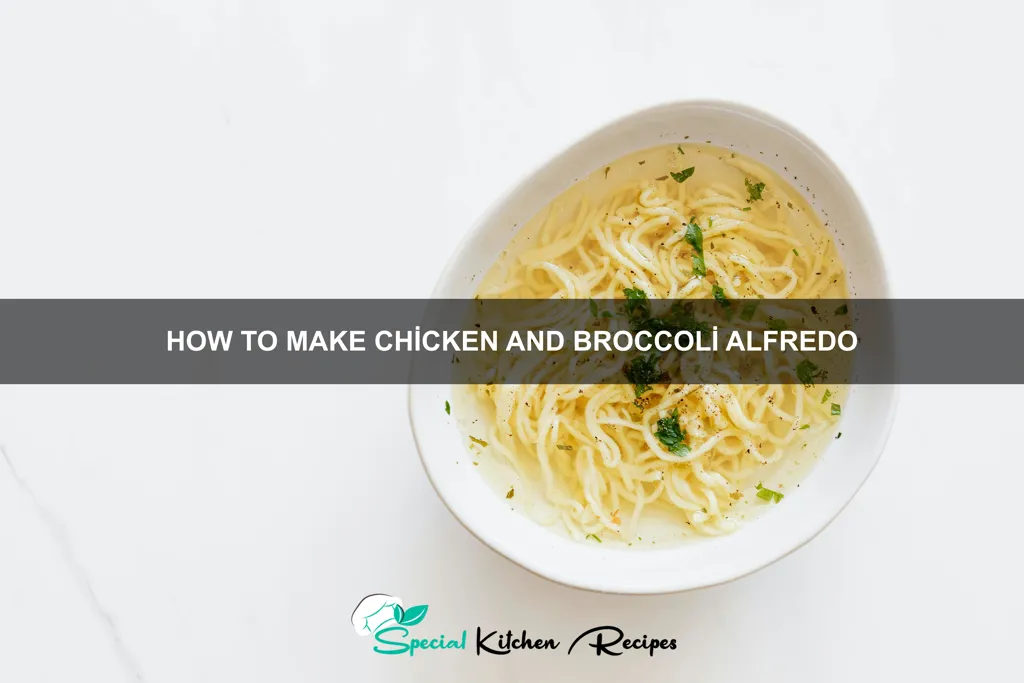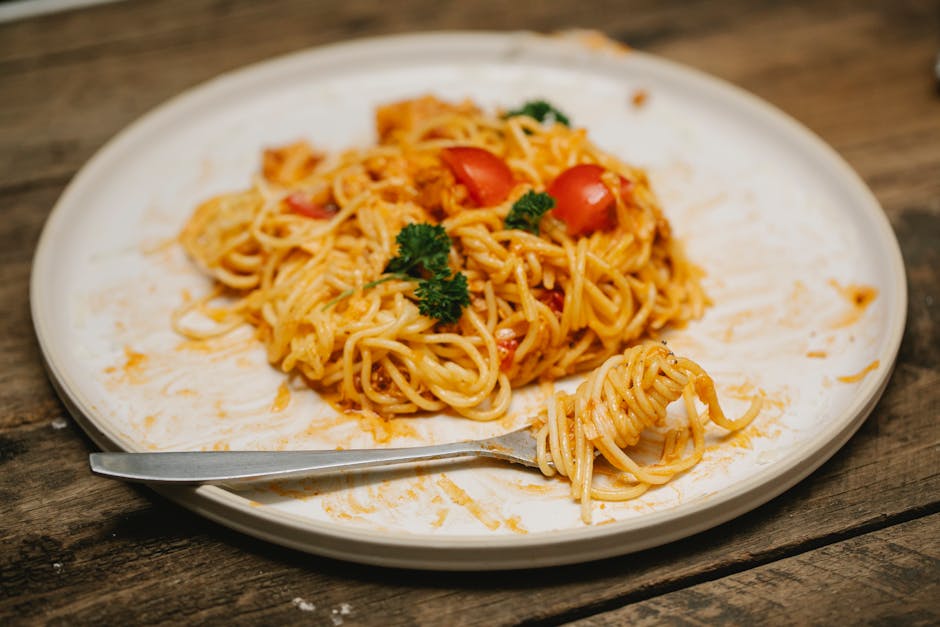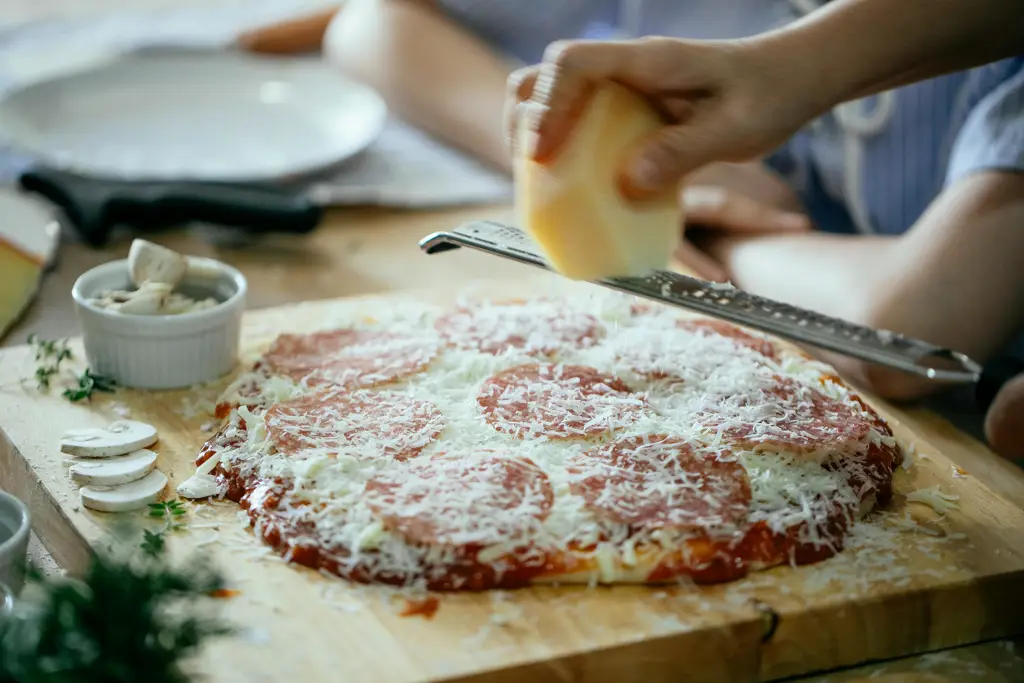Chicken and Broccoli Alfredo, a seemingly simple dish, boasts a surprisingly complex culinary history, blending the comforting familiarity of American cuisine with influences from Italian gastronomy. While a precise origin point is difficult to pinpoint, its popularity surged in the latter half of the 20th century, coinciding with the rise of convenience foods and the increasing accessibility of ingredients like chicken breast and broccoli. It’s a testament to the power of combining classic flavors in a way that’s both satisfying and relatively easy to prepare, which is likely a key factor in its enduring appeal. The dish’s roots lie in the individual components: the creamy Alfredo sauce, originating in Rome, Italy, and the globally popular chicken and broccoli, staples in many different cultures.
Alfredo sauce itself has a fascinating history. Legend attributes its creation to Alfredo di Lelio, a restaurateur in Rome who invented it in the early 1900s for his ailing wife. Its initial simplicity—butter, Parmesan cheese, and pasta—became a global phenomenon, inspiring countless variations. The addition of chicken and broccoli represents a clear departure from the original Italian recipe, yet it’s a fusion that has resonated strongly with American palates. This adaptation demonstrates the dynamic nature of culinary traditions, showcasing how dishes can evolve and adapt to different cultural contexts and dietary preferences.
The cultural significance of Chicken and Broccoli Alfredo lies primarily in its status as a comfort food and a family favorite. It’s frequently found on restaurant menus across the United States, and its popularity is evident in countless online recipes and cooking show segments. While precise statistics on its consumption are unavailable, its widespread presence in popular culture, from cookbooks to social media, suggests it holds a significant place in contemporary American culinary habits. Its ease of preparation makes it a go-to meal for busy families, further contributing to its enduring prominence. The dish’s versatility is also notable; it can be easily adapted to accommodate dietary restrictions or preferences, making it a truly inclusive and accessible meal.
Ingredients and Measurements
This recipe yields approximately 4 servings of creamy Chicken and Broccoli Alfredo. Accurate measurements are crucial for achieving the perfect balance of flavors and textures. Using a kitchen scale for ingredients like flour and cheese will ensure consistency.
For the Chicken:
- 1.5 lbs boneless, skinless chicken breasts (about 3 large breasts): Choose high-quality chicken for optimal flavor. You can substitute with chicken thighs for a richer taste, but adjust cooking time accordingly.
- 1 tbsp olive oil: Use a good quality extra virgin olive oil for the best flavor. Avoid using too much oil, as it can make the dish greasy.
- 1 tsp salt: Adjust to your taste preference. Seasoning the chicken generously beforehand is key to flavorful results.
- 1/2 tsp black pepper: Freshly ground black pepper is always preferred.
For the Broccoli:
- 1 large head of broccoli (about 1.5 lbs): Choose a head of broccoli that is firm and dark green. Trim away any tough stems before chopping.
- 1 tbsp olive oil: Use the same olive oil as for the chicken to maintain flavor consistency.
- 1/4 tsp salt: Season the broccoli lightly; it will absorb some salt from the Alfredo sauce.
- 1/4 tsp garlic powder: Optional, but adds a nice depth of flavor.
For the Alfredo Sauce:
- 1 cup heavy cream: Do not substitute with half-and-half or milk; heavy cream is essential for the creamy texture of the Alfredo sauce.
- 1/2 cup grated Parmesan cheese: Freshly grated Parmesan cheese yields the best flavor. Pre-grated cheese often contains cellulose which can affect the texture.
- 1/4 cup grated Pecorino Romano cheese (optional): This adds a sharper, more robust flavor to the sauce.
- 1/4 cup butter: Unsalted butter is recommended for better control over saltiness.
- 2 cloves garlic, minced: Fresh garlic provides the most intense flavor.
- 1/4 cup all-purpose flour: Use a sifter to remove any lumps for a smoother sauce.
- 1/4 tsp salt: Adjust according to your taste preference.
- 1/4 tsp black pepper: Freshly ground black pepper is preferable.
- 1/4 tsp nutmeg (optional): A pinch of nutmeg adds warmth and complexity to the sauce.
For Serving (optional):
- Fresh parsley, chopped: For garnish
- Extra Parmesan cheese: For sprinkling on top
Note: These measurements are guidelines. Adjust the quantities to your liking. For example, if you prefer a cheesier sauce, add more Parmesan cheese. Similarly, if you like more broccoli, feel free to increase the amount.
Equipment Preparation
Before you begin crafting your delicious Chicken and Broccoli Alfredo, ensuring you have the right equipment readily available and in optimal condition is crucial for a smooth and efficient cooking process. Proper preparation minimizes frustration and maximizes the quality of your final dish.
First, gather your cookware. You’ll need a large skillet (at least 12 inches in diameter) for cooking the chicken and broccoli. A non-stick skillet is highly recommended to prevent sticking and ensure even cooking. A heavy-bottomed pan will also help maintain consistent heat distribution, preventing hot spots that can burn the delicate Alfredo sauce. A medium-sized saucepan (approximately 2-quart capacity) will be needed for preparing the Alfredo sauce. Finally, a large pot (at least 6-quart capacity) will be useful if you choose to cook the pasta separately, although cooking it directly in the Alfredo sauce is also viable.
Next, consider your utensils. A sturdy wooden spoon or spatula is essential for stirring the sauce and preventing sticking. A pair of tongs will be helpful for flipping the chicken and removing the cooked broccoli. A sharp knife and cutting board are necessary for prepping the chicken and broccoli. Measuring cups and spoons are vital for accurate ingredient measurements, ensuring the perfect balance of flavors in your Alfredo sauce. A colander or strainer is essential for draining the pasta, if cooked separately. A whisk is recommended for creating a smooth, lump-free Alfredo sauce.
Pre-heating is key. Before you start cooking, ensure your skillet is properly heated over medium-high heat for the chicken and medium-low heat for the Alfredo sauce. This helps ensure even cooking and prevents sticking. Overheating the Alfredo sauce can cause it to separate or burn, so careful monitoring of heat is crucial.
Cleanliness and Organization. Before you start cooking, wash and dry all your equipment thoroughly. This prevents cross-contamination and ensures a clean and organized workspace. Having all your ingredients prepped and measured beforehand will streamline the cooking process, significantly reducing the time spent in the kitchen and improving your efficiency.
Optional Equipment: While not strictly necessary, an immersion blender can be used to create an exceptionally smooth Alfredo sauce. A meat thermometer is recommended to ensure your chicken is cooked to a safe internal temperature of 165°F (74°C).
Chicken Preparation
The success of your Chicken and Broccoli Alfredo hinges on perfectly cooked chicken. We’ll be using 1.5 lbs of boneless, skinless chicken breasts for this recipe. This quantity provides ample chicken for four servings. You can adjust the amount based on your needs, but remember to maintain a 1:1 ratio of chicken to pasta for a balanced meal.
Begin by preparing your chicken breasts. Thoroughly rinse the chicken under cold running water and pat them completely dry with paper towels. This is crucial for achieving a nice sear and preventing excess moisture from steaming the chicken instead of browning it. Excess moisture can also lead to a less flavorful finished product.
Next, cut the chicken breasts into 1-inch cubes. Uniformly sized pieces ensure even cooking. Larger pieces will be undercooked in the center while smaller ones may be overcooked and dry. Consistency is key!
Season the chicken generously. For this recipe, we recommend using 1 teaspoon of salt, ½ teaspoon of black pepper, ½ teaspoon of garlic powder, and ¼ teaspoon of paprika. Feel free to experiment with your favorite herbs and spices, such as Italian seasoning, oregano, or thyme. Even a pinch of red pepper flakes can add a delightful kick.
Heat 1 tablespoon of olive oil in a large skillet over medium-high heat. Once the oil is shimmering, add the chicken cubes in a single layer, avoiding overcrowding the pan. Overcrowding will lower the temperature of the pan and result in steaming rather than searing. Work in batches if necessary to ensure proper browning.
Sear the chicken for about 3-4 minutes per side, until it’s golden brown and nicely browned. Don’t move the chicken around too much during searing; let it develop a good crust. Once browned, reduce the heat to medium-low, cover the skillet, and cook for another 5-7 minutes, or until the internal temperature reaches 165°F (74°C). Use a meat thermometer to ensure the chicken is cooked through.
Once cooked, remove the chicken from the skillet and set aside. You can cover it loosely with foil to keep it warm while you prepare the rest of the dish. Avoid overcooking the chicken, as this will result in dry, tough meat. The residual heat from the skillet will continue to cook the chicken slightly even after you remove it from the heat.
Broccoli Preparation
Proper broccoli preparation is key to achieving the perfect texture and flavor in your Chicken and Broccoli Alfredo. We’ll be steaming the broccoli to maintain its vibrant green color and prevent overcooking, which can lead to mushiness. For this recipe, we’ll use approximately 1 large head of broccoli, or about 1 pound.
First, thoroughly wash the broccoli under cold running water. Pay close attention to the crevices between the florets, as dirt and debris can easily accumulate there. Using a sharp knife, trim the tough, woody end of the stem. You can peel the tough outer layer of the stem with a vegetable peeler for a more tender result, then chop the stem into bite-sized pieces. Don’t discard the stem; it’s full of flavor and nutrients!
Next, cut the broccoli head into florets. Aim for uniformly sized florets to ensure even cooking. Too large, and the centers may be undercooked; too small, and they might overcook and become mushy. Approximately 1-2 inch florets are ideal. You can adjust the size based on your preference, but consistency is key.
Now, it’s time to steam the broccoli. You can achieve this using a steamer basket over a pot of boiling water, or a dedicated steamer. Add about 1 inch of water to your pot and bring it to a rolling boil. Place the broccoli florets and chopped stem pieces in the steamer basket, ensuring they are not overcrowded. Cover the pot and steam for approximately 5-7 minutes, or until the broccoli is tender-crisp. Do not overcook! Overcooked broccoli will be limp and lose its vibrant green color.
To test for doneness, pierce a floret with a fork. It should offer slight resistance but be easily pierced. Once cooked, immediately remove the broccoli from the steamer and transfer it to a colander to drain excess water. Quickly rinsing the broccoli under cold water after steaming will help to stop the cooking process and preserve its bright green hue.
Finally, set the perfectly steamed broccoli aside. It’s now ready to be incorporated into your delicious Chicken and Broccoli Alfredo sauce. Remember to season lightly with salt and pepper before adding it to the sauce to enhance its flavor.
Sauce Preparation (Alfredo Sauce)
Creating a truly delicious Alfredo sauce is key to a fantastic Chicken and Broccoli Alfredo dish. This recipe focuses on a classic, creamy, and flavorful sauce, avoiding overly heavy or greasy results. We’ll be using unsalted butter to control the saltiness and fresh Parmesan cheese for the best possible taste.
Begin by melting 1/2 cup (1 stick) of unsalted butter in a medium-sized saucepan over medium-low heat. It’s crucial to melt the butter gently; avoid browning it, as this can impart a bitter taste to the sauce. Patience is key here – low and slow is the way to go.
Once the butter is completely melted and smooth, gradually whisk in 2 cups of heavy cream. Whisk continuously to prevent the cream from scorching or separating. This step should take about a minute or two. Make sure the cream is thoroughly incorporated before proceeding.
Next, gradually add 1 1/2 cups of freshly grated Parmesan cheese. Again, whisk continuously to ensure a smooth, lump-free sauce. Using freshly grated Parmesan is highly recommended, as pre-grated cheese often contains cellulose which can prevent the sauce from achieving its desired creamy texture. Freshly grated cheese yields a superior flavor and texture.
Continue whisking until the Parmesan cheese is completely melted and the sauce has thickened slightly. This should take about 3-5 minutes. Adjust the heat as needed to maintain a gentle simmer; you don’t want the sauce to boil vigorously.
Season the sauce with 1/2 teaspoon of freshly ground black pepper and 1/4 teaspoon of salt (or to taste). Remember that we used unsalted butter, giving you better control over the saltiness. Taste the sauce and adjust seasoning as needed. Some prefer a touch of garlic powder or nutmeg for added complexity.
Once the sauce has reached your desired consistency and flavor, remove it from the heat. Keep the sauce warm while you prepare the chicken and broccoli. Do not let it sit for too long, as it will thicken considerably as it cools.
Professional Tip: For an extra luxurious Alfredo sauce, consider adding a tablespoon of crème fraîche at the very end. This will add a tangy note and boost the creaminess.
Cooking the Chicken and Broccoli
This section details how to perfectly cook the chicken and broccoli for your Chicken and Broccoli Alfredo. Properly cooked chicken and broccoli are crucial for a delicious and balanced dish. We’ll be aiming for tender, juicy chicken and vibrant, crisp-tender broccoli florets.
Begin by preparing your chicken. We’ll use 1.5 lbs of boneless, skinless chicken breasts. Cut each breast into 1-inch cubes. This ensures even cooking and quicker preparation time. Season generously with salt and freshly ground black pepper. About 1 teaspoon of salt and 1/2 teaspoon of black pepper should suffice for this amount of chicken.
Heat 1 tablespoon of olive oil in a large skillet over medium-high heat. Once the oil is shimmering, add the chicken cubes. Avoid overcrowding the pan; work in batches if necessary to ensure the chicken browns properly without steaming. Cook the chicken, stirring occasionally, until it’s browned on all sides and cooked through, about 5-7 minutes per batch. Use a meat thermometer to check for doneness; the internal temperature should reach 165°F (74°C).
Once the chicken is cooked, remove it from the skillet and set it aside. Add 1 tablespoon more olive oil to the same skillet. Then, add 1 large head of broccoli, cut into bite-sized florets. Don’t overcook the broccoli; you want it to retain its vibrant green color and a slight crispness. Sauté the broccoli for 5-7 minutes, stirring occasionally, until it’s tender-crisp. You’ll know it’s ready when it’s bright green and easily pierced with a fork.
Important Note: If you prefer a more tender broccoli, you can add a splash of water (about 1/4 cup) to the skillet while cooking. Cover the skillet for a minute or two to steam the broccoli slightly. However, be mindful not to overcook, as this will lead to mushy broccoli.
Once the broccoli is cooked, return the cooked chicken to the skillet. Gently toss the chicken and broccoli together to combine. Set aside until ready to add to your Alfredo sauce. Taste and adjust seasoning if needed. A squeeze of lemon juice can brighten the flavors.
Now that your chicken and broccoli are perfectly cooked, you’re ready to move on to the creamy Alfredo sauce and assemble your delicious Chicken and Broccoli Alfredo!
Recommendations & Serving Suggestions
For the most flavorful Chicken and Broccoli Alfredo, we recommend using fresh, high-quality ingredients. The taste of your pasta sauce will be greatly enhanced by using freshly grated Parmesan cheese instead of pre-grated. Similarly, using fresh broccoli florets will provide a brighter, more vibrant flavor than frozen. Don’t be afraid to experiment with different types of pasta; fettuccine is classic, but linguine or even penne would work well.
To reduce the overall calorie count, consider using light cream or half-and-half in place of heavy cream. You can also add a splash of milk to thin the sauce and reduce the richness. Substituting chicken breast for thighs will also lower the fat content. Finally, don’t be shy about adding extra broccoli; it adds volume and nutrients without significantly impacting the calorie count.
Serving Suggestions: This dish is delicious on its own, but you can elevate it further. A sprinkle of fresh parsley or a grating of nutmeg adds a touch of freshness and complexity. A side salad with a light vinaigrette provides a refreshing contrast to the richness of the Alfredo sauce. Garlic bread is a classic pairing, but consider a lighter option like crusty bread for dipping into the leftover sauce.
Storage: Leftovers can be stored in an airtight container in the refrigerator for up to 3 days. Reheat gently in a saucepan or microwave, adding a little milk or cream if needed to loosen the sauce. Do not freeze this dish, as the texture of the pasta and sauce may be negatively affected.
Complementary Dishes: This creamy pasta dish pairs wonderfully with lighter sides. A simple green salad with a lemon vinaigrette provides a refreshing contrast to the richness of the Alfredo sauce. Roasted asparagus or steamed green beans are also excellent choices. For a heartier meal, consider serving it alongside a side of roasted vegetables like carrots, zucchini, and bell peppers.
Nutritional Information (Approximate per serving, based on a 4-serving recipe): Calories: Approximately 500-600 (depending on ingredients and portion size). This is an estimate and can vary greatly based on the specific ingredients used. For precise nutritional information, use a nutrition calculator with your exact ingredients and measurements. The dish is a good source of protein from the chicken and carbohydrates from the pasta. It also provides some vitamins and minerals from the broccoli. However, it is relatively high in fat and calories, so it should be enjoyed in moderation.





